China 56 Ethnic Groups 7
Kazak – China 56 Ethnic Groups
The Kaxa ethnic group was finally formed at the end of 15th century. Their ancestors include the descendants of ancient Wusun and Turkic people, the descendants of the westward Khitan migrants in 12th century and the Mongolian tribes rising in the 13th century., as well as the nomadic tribes speaking Turkic who moved eastward after the breakaway from Uzbek Kaganate.
In the mid-19th century, some Kazak tribes immigrated into China to escape from the Tsarist Russia’s rule, occupying the largest proportion of the lli citizens, Xinjiang.
The Kazak mainly lives in the Xinjiang Uygur Autonomous Region. According to the fifth national census in 2000, the population of Kazak numbered 1,250,458.
The Kazaks have their own language belonging to the Turkic branch of the Altaic language family. They had a written language based on the Arabic alphabet. A new Latinized written form came into use in 1959. In 1982, the original script was reused with the Latin written form as the phonetic symbols.
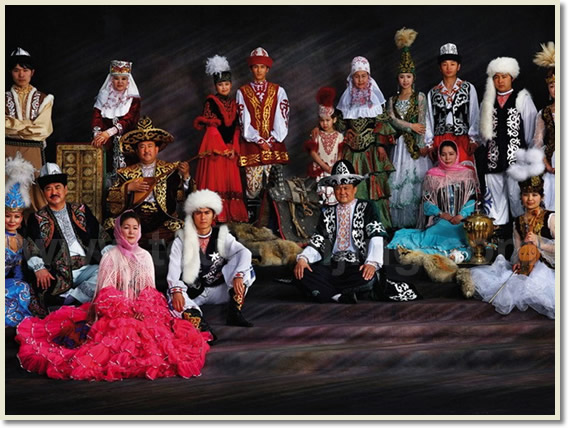
Jino – China 56 Ethnic Groups
Mt, Jino, called Youle in the documents of the Qing Dyansty, was named by the Jino themselves. Therefore, it is fully revealed that the Jinos were once the natives of the region.
The records of Jino firstly appeared in Chinese documents in the 18th century. The Qing Court dispatched Youle Tongzhi in 1729, and then appointed the Jino chleftain as Youle Tumu to rule the Youle Mountain area.
The Dai chleftain took over the dominion in later times. In June 1979, Jino was affirmed as one of the ethnic groups in China.
The majority of the Jino live in Jino Township of Jino Mountain in Jinghong city, Xishuangbanna Dai Autonomous Prefecture, Yunnan province. The fifth national census in 2000 showed that the Jino has a population of 20, 899.
The Jino language belongs to the Tibetan –Burmese branch of the Sino-Tibetan language family.w With no written script, the Jinos used to keep notes by notching wood.
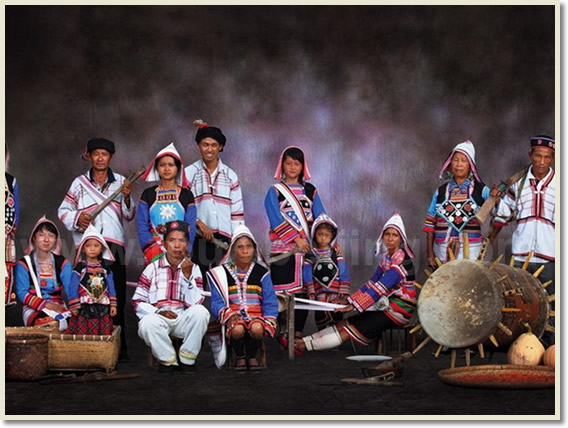
Jingpo – China 56 Ethnic Groups
The Jingpo ancestors first inhabited the southern Tibetan Plateau. They gradually migrated southward to the northwestern Yunnan and the regions west to the Nujiang River. The Jingpo areas belongs to the Yongchang prefecture in the Han Dynasty, and the Nanzhao principality in the Tang Dyasnty.
The local people, including the Jingpo ancestors, were called “Xunchuanman”. They were also respectively called “Echang”, “Zhexie” and so on. The name “Jongpo” was officially fixed afte the founding of the PRC.
There are five branches of the Jingpo ethnic goup: Jingpo, Zaiwa, Leqi, Lang’e and Bola. In most areas people of different branches live together. The language of the Jingpo branch belongs to the Jingpo subbranch of the Tibetan-Burmese branch of ht Sino-Tibetan language family, and the languages of the other four are similar, all belonging to the Burmese subbbranch of the Tibetan-Burmese branch.
The Jingpo and Zaiwa scripts co-exist, both of which are the alphabetic writings based on Latin letters. The former was created at the end of the 19th century while the latter was created in 1957.
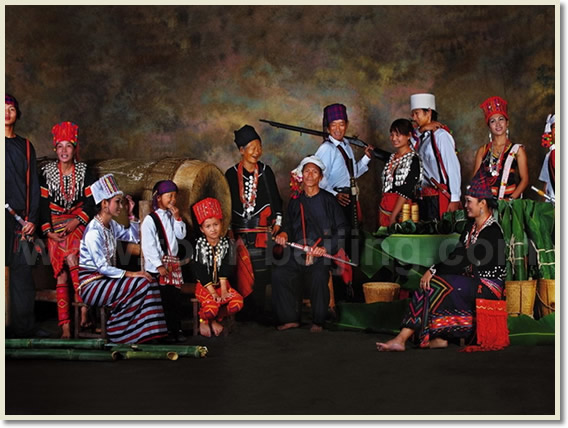
Hui – China 56 Ethnic Groups
Mainly originating from the ethnic groups in the Central Asia, the ancestors of the Hui gradually unified into an Islamic national community by the means of migrations and commercial exchange.
Stemming from the Tang and Song Dynasties, the Hui developed in the Yuan and Ming Dynasties. The “Fan” people in the Tang and Song Dynasties and the “Huihui” people in the Yuan Dynasty are major part of the Hui’s ethnic origin.
The introduction and development of Islam in China played an important joint role in the Hui’s formation.
The Hui is the most widely distributed ethnic minority in China, spreading across the whole country. The Huis concentrate in the Ningxia Hui Autonomous Region, as well as in Gangsu, Xinjing, Qinghai, Henan, Hebei, Shandong, Yunnan province, etc.
There are Hui communities of different sizes such as the Linxia Hui Autonomous Prefecture in Gansu and the Changji Hui Autonomous in Xinjing. According to the fifth national census in 2000, the population of the Hui was 9,816,802.
The Hui use the Han language. Some Arabic and Farsi vocabularies still exist in their daily communication and religious activities.
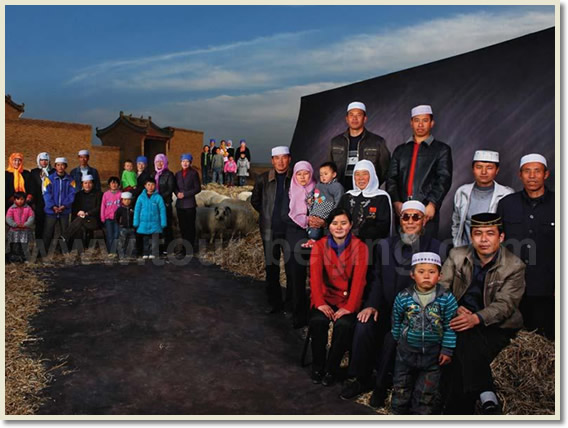
Hani – China 56 Ethnic Groups
The Hanis probably derived from the southward migration of the ancient Qiang tribe. Historical records indicate that a tribal people called the “Heyi” was active at south of the Dadu River in the 3rd century B.C. They were possibly the ancestors of the Hanis of today.
According to the records, some of them had moved westward to the area of the Lancang River between the 4th and 8th centuries. They called “Heman, then paid tribute to the Tang court and in return they were included on the list of officials and subjects of that dynasty.
It was ruled by Nanzhao and Dali Regines successively. In the Yuan Dynasty, it was under the administration of Yunnan prefecture. The Ming court exercised its rule through local chieftains, who were granted official posts. During the Qing Dynasty, court officials replaced the chieftains.
Most of the Hanis live in the southwestern Chinese province of Yunan. According to the fifth national census in 2000, the population of Hani was 1,439,673.
The Hani language is one of the Yi subbranch of the Tibetan-Burmese branch of the Sino-Tibetan language family. It has the dialect, Haya, Haobai and BIka, whose difference are too bige for people to communicate with each other. Having no script of their own, they created a script based on the Latin and alphabet in 1957.
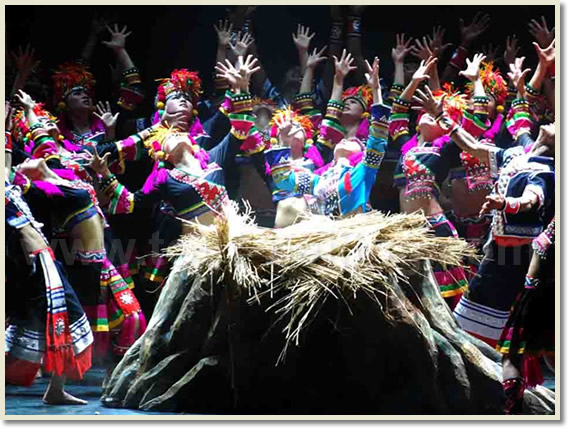
Questions & Answers:



